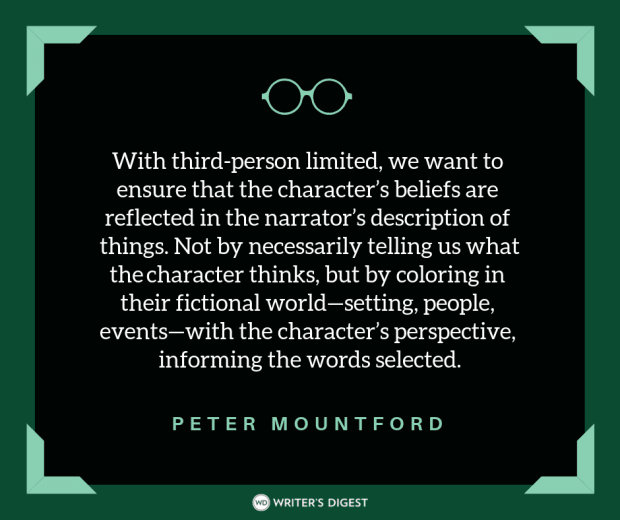Originality: Making Your Work Seem Fresh & New
Today’s guest post is by Jim Adam. It is part of a series on storytelling and The Strengths of the Potter Series. Check out Jim’s book, Motherless. The author of…
Today's guest post is by Jim Adam. It is part of a series on
storytelling and The Strengths of the Potter Series. Check out Jim's
book, Motherless.
The
author of Ecclesiastes had it right: there is nothing new under the
sun. For most artists, true originality is unobtainable and a waste of
time to pursue.
Scientists come close to true originality on a regular
basis, as they net secrets out of the dark depths of ignorance, but
still their work relies on what has gone before. Einstein is nonsense
without the muddled physics of the late 1800s. Newton stood on the
shoulders of Galileo, Copernicus, and cats like that. The
Renaissance—well, the name says it all.
Even if true originality is
unachievable, a writer can still imbue her work with the illusion of
originality. And Rowling is masterful in this respect.
Details,
specifics, are critical in creating a sense of originality in any story
(more on this later), but the Potter series is original at a higher
level as well.
First, the Potter series ignored, and so redefined, the
rules of both fantasy and young adult literature. The Potter stories
contain elements of horror, suspense, and mystery, and so resist easy
categorization.
In its physical construction, the series is also
original. It has a clear beginning, middle and end (unlike the
typical multi-volume, episodic series: Hardy Boys, the Oz books), while
it also avoids being either a media tie-in or fundamentally
Tolkienesque (unlike the majority of fantasy novels published in the
last umpteen years).
Second, the series makes use of archetypes in unfamiliar ways.
Archetypes
The
Potter series contains a number of archetypes, but it uses them without
seeming cliche or tired and overdone. Some of the archetypes are quite
familiar (Harry as the normal person who discovers he isn’t normal
after all; Dumbledore as the wizened mentor) while some archetypes are
less familiar (Hogwarts and Hagrid, for example).
Familiar
archetypes are as easy to find as picking up a book by Joseph Campbell.
But how does a writer go about locating, or else creating, unfamiliar
archetypes? One approach is to merge two familiar archetypes, as the
Potter series does with Hogwarts, which melds the fairytale Other land,
and the Gothic boarding school.
Hogwarts is a Never-Never Land, but
one that is reachable by conventional means.
Instead of falling down a
rabbit hole, stepping through a magic closet, or being carted off by a
tornado, Harry reaches Hogwarts by train (for the most part), adding a
wonderful element of determinism to the magical situation. Also, while
Harry is at Hogwarts, despite the immensity of the place, he isn’t
wandering aimlessly around in a planet-sized fairy land (something that
can begin to feel like a slideshow of someone else’s vacation). Rather,
he is at a school, with classes to attend and sports to participate in.
Thus,
the melding of two archetypes into one does more than make Hogwarts
seem original, it also makes Hogwarts feel more deterministic and more
accessible—important traits in a work of fantasy.
Hagrid, meanwhile,
feels even less familiar as an archetype than Hogwarts does. Surely we
could dig up a correlation between Hagrid and a character from some
myth or legend. But for most of us, Hagrid is something we haven’t seen
before, and yet he has that feeling of being just right for his role in
the story. Does he qualify as an archetype? Well, he at least fulfills
the key requirement of being larger than life. In his case, literally.
By
including unfamiliar archetypes like Hogwarts and Hagrid, the Potter
series makes the more familiar ones feel fresh. Even after we spot the
similarities, Harry doesn’t seem like just another King Arthur. Next up: Story Structure
--
Looking for more help on the craft of fiction? Don't miss these offerings:
- Our complete guide to writing the YA novel. Read an excerpt on finding ideas for strong teen fiction.
- Take an online course and get feedback from a professional and published instructor. Here's one of my favorites on plot & structure. (Use coupon code JAN10 to get 15% off.)
Jane Friedman is a full-time entrepreneur (since 2014) and has 20 years of experience in the publishing industry. She is the co-founder of The Hot Sheet, the essential publishing industry newsletter for authors, and is the former publisher of Writer’s Digest. In addition to being a columnist with Publishers Weekly and a professor with The Great Courses, Jane maintains an award-winning blog for writers at JaneFriedman.com. Jane’s newest book is The Business of Being a Writer (University of Chicago Press, 2018).









